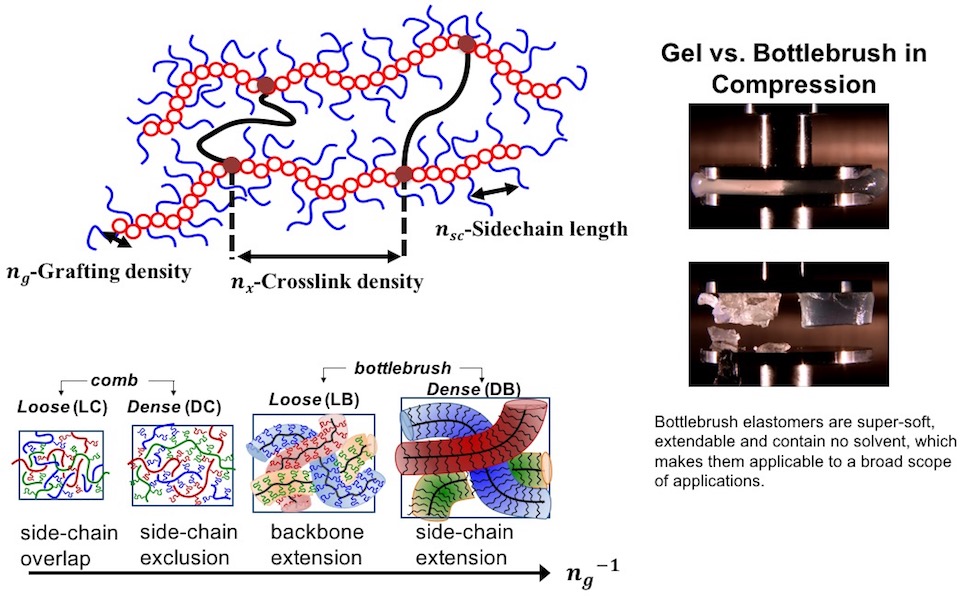Polymer Gels
Polymer Gels
A new type of “Rigid and Tough” hydrogel with excellent elasticity is designed by dense clustering of hydrogen bonds within a loose chemical network. The resultant hydrogel exhibits a good combination of high modulus, 28 MPa, toughness, 9300 J m-3, extensibility, 800%, and tensile stress, 2 MPa.

Furthermore, the gel displays good fatigue-resistance and complete and extremely fast recovery of shape and mechanical properties, 3 minutes at 37 degrees Celsius.
Combining high concentration of reversible hydrogen bonds with a loosely crosslinked chemical network produces dual network hydrogels with high modulus and toughness on par with those observed for connective tissues.

The dynamic nature of the H-bonded crosslinks results in a strong temperature and strain rate dependence of the hydrogel mechanical properties. The dynamic behavior of dual networks has been explained by a theoretical model predicting distinct relaxation regimes as a function of strain rate and temperature. Our analysis of the dual network’s dynamics provides general frameworks for characterization of such materials.
Ultra-Soft Elastomers

Published in Nature Materials researchers in the Sheiko and Rubinstein groups, in collaboration with scientists from the University of Akron, and Carnegie Mellon University, report solvent-free, supersoft and superelastic polymer melts and networks prepared from bottlebrush macromolecules. The brush-like architecture expands the diameter of the polymer chains, diluting their entanglements without markedly increasing stiffness. This adjustable interplay between chain diameter and stiffness makes it possible to tailor the network’s elastic modulus and extensibility without the complications associated with a swollen gel. The bottlebrush melts and elastomers exhibit an unprecedented combination of low modulus, about 100 Pa, high strain at break, about 1,000 percent, and extraordinary elasticity, properties that are on par with those of designer gels.
